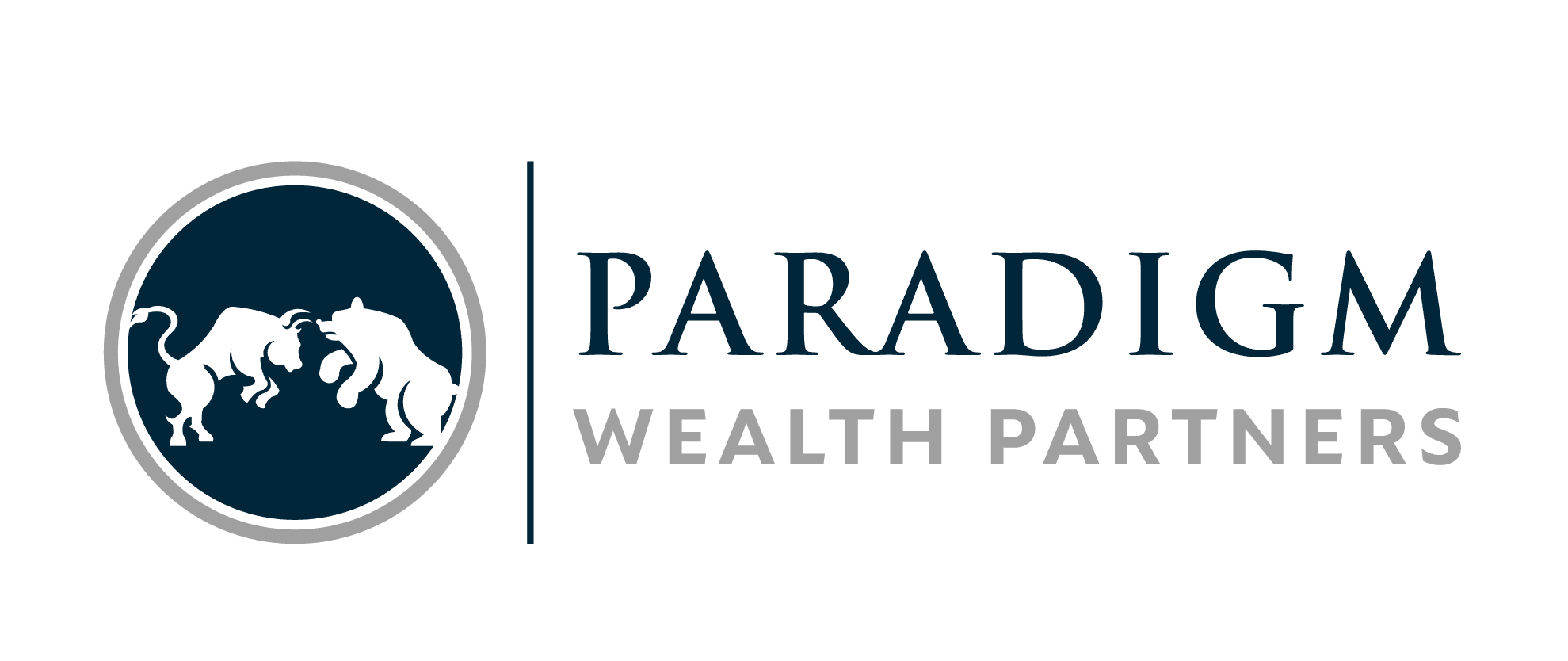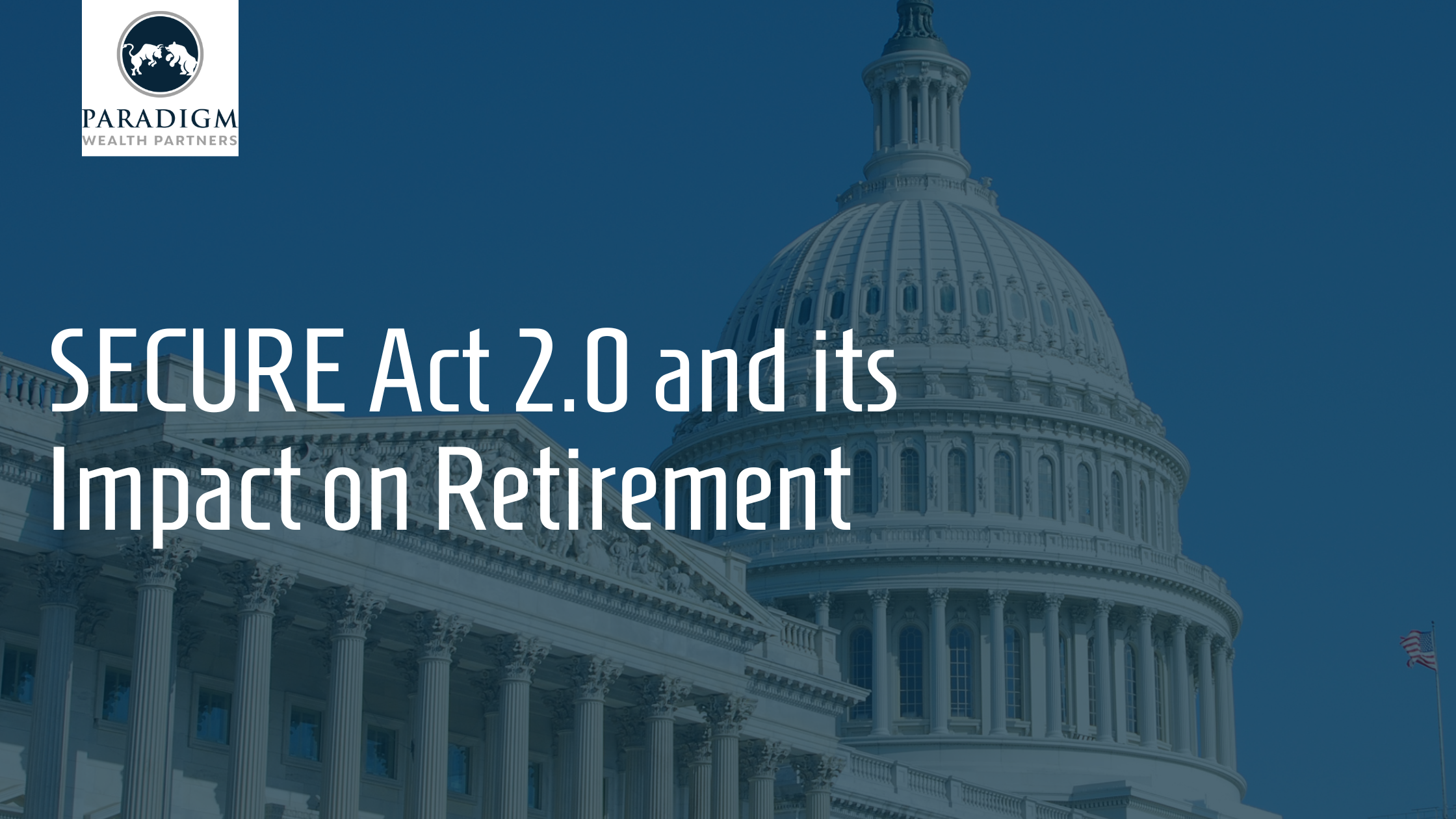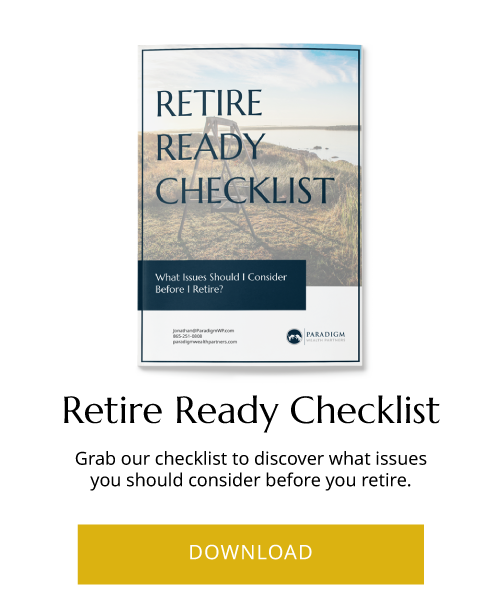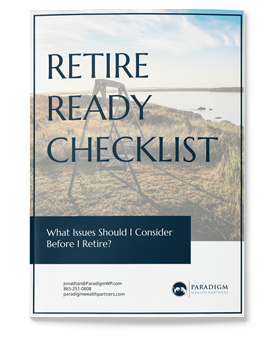The Secure Act 2.0 and Its Impact on Your Retirement
With the clock ticking fast on 2022, President Biden signed the omnibus spending bill into law on December 29, 2022. Part of that bill includes the SECURE Act 2.0 of 2022, which may significantly impact your retirement. We’ll take a look at what the bill means for your retirement.
What is the SECURE Act 2.0?
The first SECURE Act was passed into law in late 2019 and altered the rules around saving and withdrawing money from retirement accounts. The SECURE 2.0 Act is a follow-up to the 2019 legislation and has broad bipartisan support. It aims to help Americans increase their retirement savings by making it easier to participate in and benefit from employer-sponsored retirement plans and ease some of the administrative headaches for employers.
There are 8 significant changes in the Act to be aware of.
1. Increase in the RMD Age and Reduction in Penalties
An RMD is required minimum distribution, the amount under US tax law that retirees must withdraw each year from employer-sponsored retirement accounts and traditional IRAs once they reach a certain age. That money has yet to be taxed, and the IRS wants its cut.
The Act raised the age at which retirees must start taking RMDs. For 2023, the RMD age is 73, increasing to 74 in 2029 and 75 in 2033. If you’re already taking RMDs, you must continue doing so.
The Act also reduces penalties for failing to comply with RMD requirements from an excise tax equal to 50% of the year’s RMD amount to 25%. The fine drops to 10% for IRA owners who fail to take RMDs but correct the mistake in a “timely manner.”
These changes allow investors more control over when to withdraw the money and give the money more time to grow tax-deferred and ride out a down market.
2. Increased Contribution Catch-Up Limits
Those aged 50 and over can make additional contributions to retirement accounts over and above the regular limits. These are called “catch-up” contributions and help those who have delayed or not started saving for retirement to “catch up” before retirement.
- Beginning in 2024, the $1,000 catch-up limit for IRAs will be indexed for inflation.
- Beginning in 2025, catch-up contributions for 401(k) and 403(b) plans will be $10,000 or 150% of the catch-up limit, whichever is greater for those between the ages of 60 and 63.
- Beginning in 2026, the catch-up for 401(k) and 403(b) plans will be indexed by inflation.
This change will allow for catch-up contribution limits that aren’t set arbitrarily but tied to inflation.
3. 401(k) Matching Based on Student Loan Payments
It isn’t only younger workers who have student loan debt:
- Under age 30: 26%
- 30-39: 28%
- 40-49: 13%
- 50-59: 12.5%
- 60 and older: 5.3%
Those with student loan debt may have to forego saving for retirement and every day lost when it comes to saving for retirement means money left on the table. The Act allows employers to make matching contributions to an employee’s 401(k) or 403(b) account even if the employee is not making contributions themselves.
Matching contributions are voluntary; employers are not required to make them. Offering matching contributions is a great way for employers to attract talent and a real benefit to those forced to choose between student loan debt and saving for retirement.
4. 529 Plan to Roth IRA Rollovers
529 Plans are a tax-advantaged way to invest for educational expenses. There are almost 15 million 529 accounts that hold $480 billion. Investment earnings on the contributions grow tax-free and aren’t taxed when used to pay for eligible educational expenses. If the money is used for ineligible expenses, it’s subject to income tax and a 10% penalty.
Under the Act, unused money in a 529 account can be rolled over into a Roth IRA, which means there would be no income tax or penalty, and the investment would continue to grow tax-free and post-retirement withdrawals would also be tax-free.
The lifetime rollover limit is $35,000, and both accounts must be in the original beneficiaries name, so a parent can’t take money out of a child’s 529 plan and roll it over to their own Roth IRA. Additionally, the 529 account must have been open for at least 15 years.
This is a great way to repurpose unused 529 plan money without incurring the usual taxes and penalties.
5. Roth 401(k)s are Exempt from RMDs
Roth IRAs are exempt from RMD rules, and under the Act, Roth 401(k)s will also be exempt beginning in 2024. Like the increase in the RMD age, these changes allow investors more control over when to withdraw the money and give the money more time to grow tax-deferred and ride out a down market.
6. Automatic Enrollment in 401(k) and 403(b) Plans
Another hurdle for retirement savings is that employer-sponsored plans require the employees to enroll, and some people don’t for whatever reasons. The Act requires automatic enrollment for new 401(k) and 403(b) plans beginning in 2025 for plans with more than ten employees that have been in operation for three years or more.
Employees can opt-out, and all existing plans are exempt.
Automatic enrollment removes another barrier for those not saving for retirement. The one-two punch is automatic enrollment with an employer who matches as you pay your student loans!
7. Increase to Qualified Charitable Distribution Limits
Beginning in 2024, QCD limits, currently $100,000, will be indexed by inflation. QCDs allow those over age 70 ½ to contribute to qualified charities from their IRAs to avoid the recognition of income for the amount of the donation. The Act also allows a one-time gift of $50,000 through a charitable trust or annuity beginning in 2023.
QCDs allow you to satisfy your RMD while supporting causes important to you.
8. Find Lost 401(k) Accounts
If you’ve lost track of a 401(k) account at a former job, the Act will create a searchable database to help you track it down. The database will be housed at the Department of Labor and created within the next two years.
Found money is always a bonus!
If you have any questions about how the SECURE Act 2.0 impacts your retirement planning, we’re here to help. So you can retire and Create the life you love!



